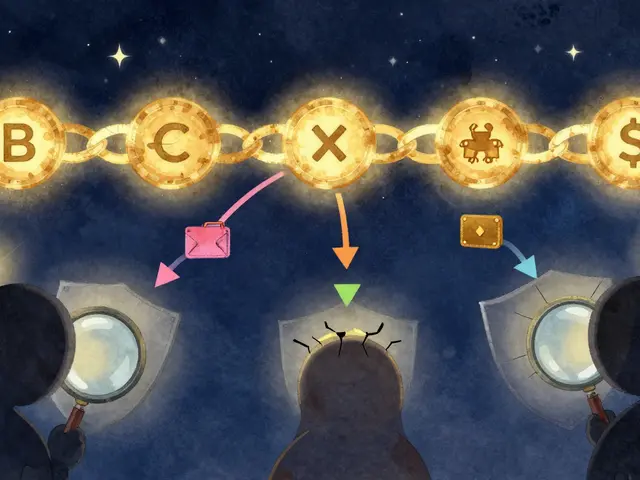CAKEBANK Airdrop – Complete How‑to Guide
When diving into CAKEBANK Airdrop, a token giveaway run by the CAKEBANK platform that hands out free CAKE tokens to eligible users. Also known as CAKEBANK token distribution, it creates a low‑cost entry point for new participants in the ecosystem, you instantly tap into a broader crypto airdrop, a promotional method where projects distribute tokens to wallets that meet simple criteria. This mechanism is popular in DeFi, decentralized finance platforms that rely on community engagement and liquidity provisioning, because airdrops boost network effects without expensive marketing. The CAKEBANK airdrop itself follows a typical token distribution pattern: the project sets a snapshot date, defines eligibility rules (such as holding a minimum amount of a native token or connecting a wallet), and then allocates a fixed pool of CAKE tokens proportionally. Understanding these attributes—snapshot timing, eligibility, claim window, and token lock‑up—helps you avoid common mistakes like missing the claim period or exposing your wallet to phishing scams.
Key Steps to Claim the CAKEBANK Airdrop
First, you need a compatible wallet that supports the Binance Smart Chain, since CAKEBANK operates on that chain. MetaMask, Trust Wallet, or Binance Chain Wallet all work, but make sure your wallet is funded with a small amount of BNB to cover transaction fees. Next, verify eligibility by checking whether you held the required amount of CAKE or related tokens at the snapshot block. Most projects publish a snapshot tool on their website; enter your address and confirm the result before the claim window opens. When the claim period starts, head to the official CAKEBANK airdrop portal, connect your wallet, and click “Claim.” The portal will generate a signed transaction that you must approve in your wallet—this is where the BNB fee is deducted. After the transaction confirms, the CAKE tokens appear in your wallet, often with a lock‑up schedule that releases tokens over weeks or months to prevent immediate sell‑off. Keep an eye on the project’s announcements for any extra steps, such as completing a KYC form or joining a community channel, which some projects require to finalize distribution.
Security is a major concern with any airdrop. Scammers frequently clone official claim pages, inject malicious scripts, or ask for private keys. Always double‑check the URL, use a bookmark, and never share your seed phrase. If a project asks for a fee to “process” the airdrop, it’s almost certainly a fraud; legitimate airdrops only require the network fee for the transaction. Additionally, be aware of tax implications: many jurisdictions treat airdropped tokens as taxable income at the fair market value on the day you receive them. Keep records of the claim date, token amount, and USD value for future reporting. By following these safety measures, you protect both your assets and personal data while enjoying the benefits of the CAKEBANK token distribution.
Now that you understand what the CAKEBANK airdrop is, how it fits into the broader crypto airdrop and DeFi landscape, and the exact steps needed to claim safely, you’re ready to explore the detailed guides below. Each article dives deeper into specific aspects—eligibility calculators, wallet setup tutorials, tax reporting tips, and security checklists—so you can maximize your rewards and stay secure in the fast‑moving world of blockchain giveaways.
CAKEBANK Airdrop Details: How to Join and What to Know
Explore the reality behind the CAKEBANK airdrop, learn how legit airdrops work, verify claims, and get a step‑by‑step checklist to stay safe.





